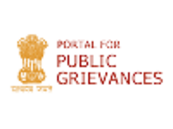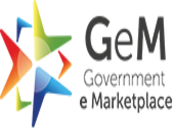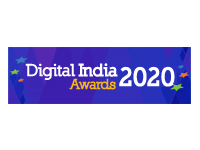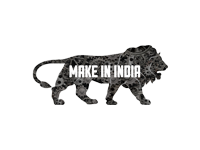S. Ravindran
National Information System for Science & Technology DSIR, New Delhi-110016
1. INTRODUCTION
UNESCO/PGI and National Information System for Science & Technology (NISSAT) in cooperation with National Institute of Science, Technology & Development Studies (NISTADS) organised a one week sub-regional workshop on IDAMS in CSIR Science Centre, New Delhi during 17-21 March 1997.
2. INAUGURATION
Dr. A. Lahiri, Adviser, NISSAT while welcoming the resource persons and participants outlined the background of the workshop and plans of NISSAT for promoting this package in the country. He informed that micro-ISIS and micro IDAMS software have been developed by UNESCO for information management and statistical data analysis respectively. NISSAT is the national distributor for these software. The micro-ISIS has been successfully implemented in the country. However, IDAMS which is equivalent to any high priced statistical package available in the market, has not met with much success so far. Perhaps, training and technical back up services, which helped the micro-ISIS to prosper, were not arranged with the same degree of seriousness in the case of IDAMS. As a first step in bridging the gap, it was felt necessary to build up internal capabilities and expertise to guide and assist the potential user community. Given the task, the objective of the workshop was to train a set of trainers with external assistance. This could be followed up with a series of national workshops.
Inaugural session in porgress. Sitting on the dias (from L to R) are:
Dr. A lahiri, Dr. Ashok Jain, Mr. MD Asthana, Mr Peter Huniya and Mrs S Ravindran [Photograph]
Mr. Peter Huniya, IDAMS Programme Manager, UNESCO in his introductory remarks outlined the salient features of IDAMS and the efforts made by UNESCO in developing the package. He described the current areas of concentration of UNESCO's major programme on communication, information and informatics, and explained the role that member countries could play in its fruitful implementation.
Inaugurating the workshop, Mr. M.D. Asthana, Secretary, Department of Statistics, Government of India, described the growth of activities on information collection, processing and dissemination. Today, computers are available in all organizations for processing information.
However, the information flow is too large to cope up with. He felt that India has a robust statistical system but the time lag in processing is far too large. He hoped that NISSAT will organise workshops on IDAMS at the national level and help bridging the gap in skills.
Dr. Ashok Jain, Director, NISTADS who presided over the function, lamented that value addition to numerical data is long neglected in the country. The value added products and not raw data can support decision making processes. He hoped that the present workshop on IDAMS would help in the development of an analytical skillbase. He suggested that NISSAT should identify a core group of experts in various software packages so that technical support could be provided when needed. He thanked UNESCO for the timely help in our national pursuits.
Mrs. Sreedevi Ravindran, Director, NISSAT proposed the vote of thanks.
Mr Peter Huniya, Programme Manager, UNESCO delivering the lecture [Photograph]
3. PARTICIPATION & FACULTY
There were twenty-three participants from different institutions including three regional participants one each from Bangladesh, Nepal and Sri Lanka. The expenses on foreign participation was paid through a UNESCO grant. Mr. Peter Huniya was the main resource person assisted by two officers from NISSAT.
The coordinators and organizers of the workshop were (i) Mrs. Sreedevi Ravindran, Director and Mr. B.N. Sarkar, Senior Scientific Officer-I, NISSAT and (ii) Dr. Ashok Jain, Director & Mr. A. Wahid, Scientist, NISTADS.
4. COURSE CONTENT
The emphasis was mainly on hands-on experience on computers. The topics included : General presentation of IDAMS; Data in IDAMS; IDAMS "Setup" file; IDAMS Data Mangement Programs; IDAMS Data Analysis Programs; IDAMS Recode Facility; Micro CDS/ISIS - IDAMS Interface, and GRAPHID.
5. EVALUATION & SUGGESTIONS FOR FUTURE DEVELOPMENTS
5.1 General Comments
The participants were requested to give their views on the organization and conduct of the workshop and suggestions for the future development of the package. The response was very positive and encouraging. The participants were of the view that the workshop had given an overall view of the capabilities of the package. They mentioned that the lectures and practicals were adequately balanced. However they felt that the duration of the course should have been minimum of two weeks.
5.2 Suggestions to NISSAT
-
Organise a series of national level workshops in different parts of the country.
-
Organise at least one sub-regional workshop with the participation of the UNESCO expert every year.
-
Take up at least a few pilot projects to demonstrate the utility of the package and to modify the package on the basis of the experiences gained.
5.3 Suggestions to UNESCO
-
Expand the package by including the applications like linear and dynamic programming; design of experiments; stochastic modeling; demographic analysis and modeling; forecasting models and time series analysis; analysis of survey data in the case of probability proportional sampling and use of regression and ratio estimates.
-
Organise at least one sub-regional workshop with the participation of UNESCO expert every year.
-
Include exercises with results in the manual.
-
Incorporate optimization procedures/ tools in the package





















